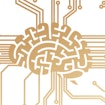Aggression is the most common reason for hospitalization in children with autism, yet little is known about the neurobiology of aggression in autism, and current treatment options are grossly inadequate. In this project, Neir Eshel and colleagues plan to use a mouse model to explore the roles of dopamine and serotonin in controlling aggressive responses to frustration.
Bridge to Independence
The overall goal of Xin Tang’s project is to yield insights into the molecular programs that lead to reduced KCC2 gene expression in neurons from individuals with autism and to consequently develop mechanism-guided drugs that restore KCC2 gene expression and ultimately reverse symptoms of the condition.
Many individuals with ASD experience persistent agitation or aggression, which has an enormous impact on their and their families’ quality of life. In this project, Alexander Li Cohen aims to identify a brain circuit where injury or developmental alteration is associated with agitation and aggression across age and clinical populations. This will localize a potential mechanism as well as a putative treatment target for non-invasive neuromodulation.
One of the overall goals of autism research is to discover convergent mechanisms underlying the condition across individuals. With this goal in mind, Eirene Markenscoff-Papadimitriou aims to look for common mechanisms of dysfunction that result from mutations in two autism risk genes, POGZ and ADNP. Knock-out mouse models, as well as stem-cell derived neurons lacking these two genes, will be studied to assess what impact the loss of these two genes has on cortical gene expression and chromatin state.
Brain imaging in children and adults with autism spectrum disorder (ASD) have identified excessive local connectivity and long-range dysconnectivity in the cerebral cortex. In this project, Kartik Pattabiraman aims to use single cell-level transcriptomic and viral circuit tracing approaches to spatiotemporally characterize mouse cortical subplate neurons and characterize their role in cortical circuit assembly and disruption associated with ASD.

DNA methylation is a key epigenetic modification that is disrupted in a subset of ASD cases. In the current project, Hume Stroud aims to assess regulatory mechanisms affecting the activity of the DNA cystine methyltransferase DNMT3A and whether there is a critical window during which DNMT3A function can be restored in mouse models.

Mutations in the FMR1 gene, which encodes the RNA-binding protein FMRP, are the most common cause of intellectual disability and autism spectrum disorder. In the current project, Ethan Greenblatt plans to leverage the genetically and biochemically tractable Drosophila oocyte system to understand the mechanism of FMRP-dependent translation. Such knowledge will help advance the development of novel diagnostics and therapies for ASD subtypes that are caused by haploinsufficiency of FMRP or downstream targets.

The neuromodulators vasopressin and oxytocin regulate inhibitory tone and sensory processing in the cerebellum. In the current project, Stephanie Rudolph and colleagues aim to manipulate neuromodulatory input in genetic mouse models for autism that have known deficits in cerebellar function with the goal of rescuing behavioral changes.

Neurexin-neuroligin binding is essential for appropriate synaptic development and function, and mutations in neurexins and neuroligins have been linked to autism spectrum disorder (ASD). In the current project, Peng Zhang aims to assess how enhancements to and blockade of a specific heparan sulfate moiety alters neurexin function and whether such modulations can reverse synaptic deficits in a neurexin mouse model of ASD.

Ranmal Aloka Samarasinghe is studying brain organoids derived from individuals with mutations in SCN8A. Preliminary findings suggest that these organoids display excitatory-inhibitory imbalance and a loss of gamma oscillations. The current study aims to uncover the pathophysiological changes that underlie this observation and to test novel therapeutics that can rescue key cellular and physiological phenotypes in this model.
- Previous Page
- Viewing
- Next Page